
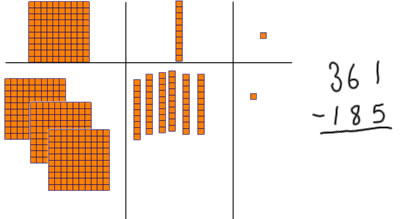
The first thing we do with the manipulatives is to build the amount we will be taking away from: 3 hundreds, 6 tens and 1 unit.
[notice that I am starting with the manipulatives]

Now we look at the ones place: want to take away 5 ones, but we only have 1 one, so we need to get more ones. We get more ones by trading in a ten. A ten has the same value as 10 ones, so we trade in a ten for 10 ones
[notice that I am reinforcing that we trade 10 ones for a ten because those are equal values]

Now, I stop and write down the result of the trade. I traded in a ten, so I need to change the 6 tens to 5 tens in the tens column. I got 10 more ones from the trade. I had 1 one before so now I have 1+10=11 ones, so I change the 1 in the ones column to an 11 to show the 11 ones.
[Notice that I'm recording the trade before I go on to the subtraction step]
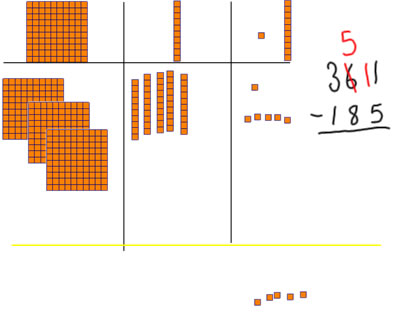
Now, I have enough ones to take away 5, so I take away 5 and put them in a different part of my workspace. What is left is 6 ones (11-5=6).
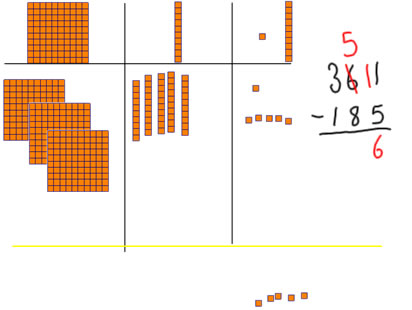
Now I write down in the answer that I have 6 ones left after subtracting.
Next, I want to take away 8 tens. I can't do that right now, because I only have 5 tens, so I need to get more tens.
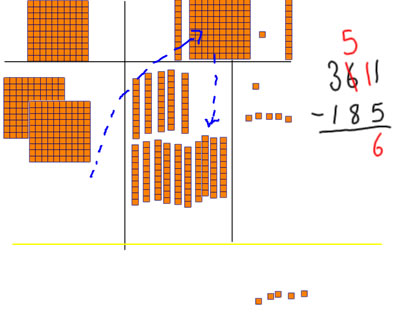
I get more tens by trading 1 hundred for 10 tens. 1 hundred is the same amount as 10 tens, so that's a fair trade.

Now I stop and write down what I did in the trade. I traded in 1 hundred, so there are now 2 hundreds instead of 3. I write that down by crossing out the 3 in the hundreds place, and writing in 2.
I got 10 tens from the trade. There were 5 tens there already, so now there are 10+5=15 tens. I write that down by changing the 5 in the tens column to a 15.
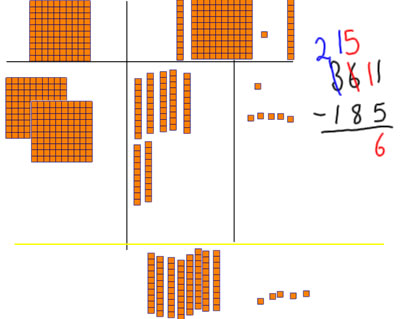

15 tens minus 8 tens is 7 tens, so we write 7 in the tens column of the answer.
Next we want to take away 1 hundred and there are already 2 hundreds, so we don't need to make any trades
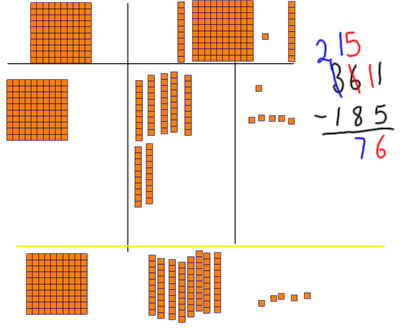
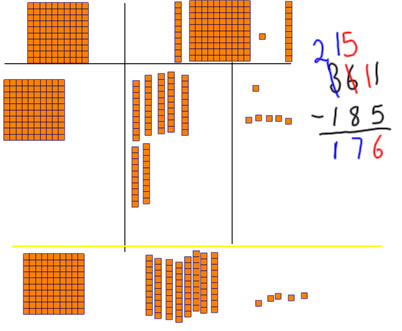
2 hundred minus 1 hundred is 1 hundred, so write 1 un the hundreds column of the answer.
We can check our manipulative work by making sure that there are 185 in the take away part of the work space and 176 in the part of the work space that shows what's left.